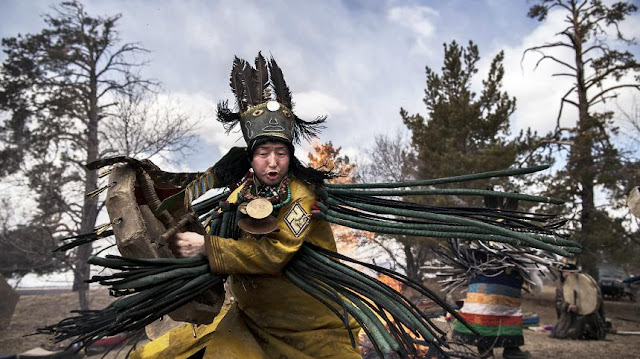The Eight Auspicious Symbols are one of the most common, yet very popular in the Tibetan Buddhism and culture for over thousands of years.
Eight Auspicious Symbols in the Sanskrit word is "Ashtamangala". In the Tibetan language is known as "Tashee-tag-gyay" The Eight Auspicious Symbols of Buddhism is a genre of Buddhist symbolism. The symbols derive from Indian iconography and have become especially popular in Tibetan Buddhism.
The Eight Auspicious Symbols are traditionally offered to Lama, teachers during long life ceremonies and are used in various forms of ritual art. It is believed that each of the Tibetan symbols represents one aspect of the Buddha’s teachings and when appearing all together their powers are multiplied.
1. Right-Coiled White Conch Shell
2. Precious Parasol
3. Victory Banner
4. Golden Fishes
5. Dharma Wheel
6. Endless Knot
7. Lotus Flower
8. Treasure Vase
These eight symbols of good fortune represent the offerings made by the Gods, and Brahma to Shakyamuni Buddha immediately after he attained enlightenment.
What do the eight symbols of Buddhism mean?
In Buddhism, these eight symbols of good fortune represent the offerings made by the gods to Shakyamuni Buddha immediately after he gained enlightenment.
"Doong-kahr-yay-kyeel" in the Tibetan word, which represents the heavenly sound of the Buddhadharma Its beautiful sound is far-reaching and melodious; upon hearing it, it will awaken beings from ignorance.
The white conch shells, which spiral to the right in a clockwise direction, are a rarity and are considered especially sacred. The right-spiralling movement of such a conch is believed to echo the celestial motion of the sun, moon, planets, and stars across the heavens. Today, the conch is used to call together religious assemblies. During the actual practise of rituals, it is used both as a musical instrument and as a container for holy water.
The white conch shells, which spiral to the right in a clockwise direction, are a rarity and are considered especially sacred. The right-spiralling movement of such a conch is believed to echo the celestial motion of the sun, moon, planets, and stars across the heavens. Today, the conch is used to call together religious assemblies. During the actual practise of rituals, it is used both as a musical instrument and as a container for holy water.
The Right White Conch Shell is a dependent arising announcing the sweet melody of the profound and extensive Dharma that fits the elements, level of mind, and wishes of sentient beings who are the objects to be subdued. It awakens transmigratory beings from the ignorant sleep of unknowing and persuades them to accomplish works for the benefit and happiness of themselves and others.
Do you earnestly cherish our devoted work? Assuming this is the case, we are delighted that you are finding our blog useful and valuable. Would you consider making a donation for our Buddhist research and development?
We need your help to secure the future of scholarly interaction with Buddhism. Since our very first publication of Dharma works and activities in 2008, we have been effortlessly providing free distribution of Dharma posts and articles throughout the previous 14 years. We have exceptionally constrained support and do not receive subsidies or funding from people in general.
Please help us develop our Dharma activities that will not only benefit you but all Dharma readers on the planet. Please consider showing your support. Your generosity will certainly help us enhance our work and accomplish more for a better and brighter future.
Thank you for reading. May you find peace and great bliss. With your support, it helps to spread the Buddha’s precious teachings and turn the Dharma wheels in the world.
Aspiration For Bodhichitta
For those in whom the precious Bodhichitta has not arisen
May it arise and not decrease.
But increase further and further.
Dedication of Merit
By this merit, may we then obtain omniscience then.
Having defeated the enemies wrongdoings
May we liberate migratory from the ocean of existence.
With its stormy waves of birth, old age, sickness, and death.
*Note
I do not own or infringe any copyright on the picture(s).
Picture(s) courtesy and credit to the rightful distributors and/or studios
The picture(s) are intended for editorial use only.
















